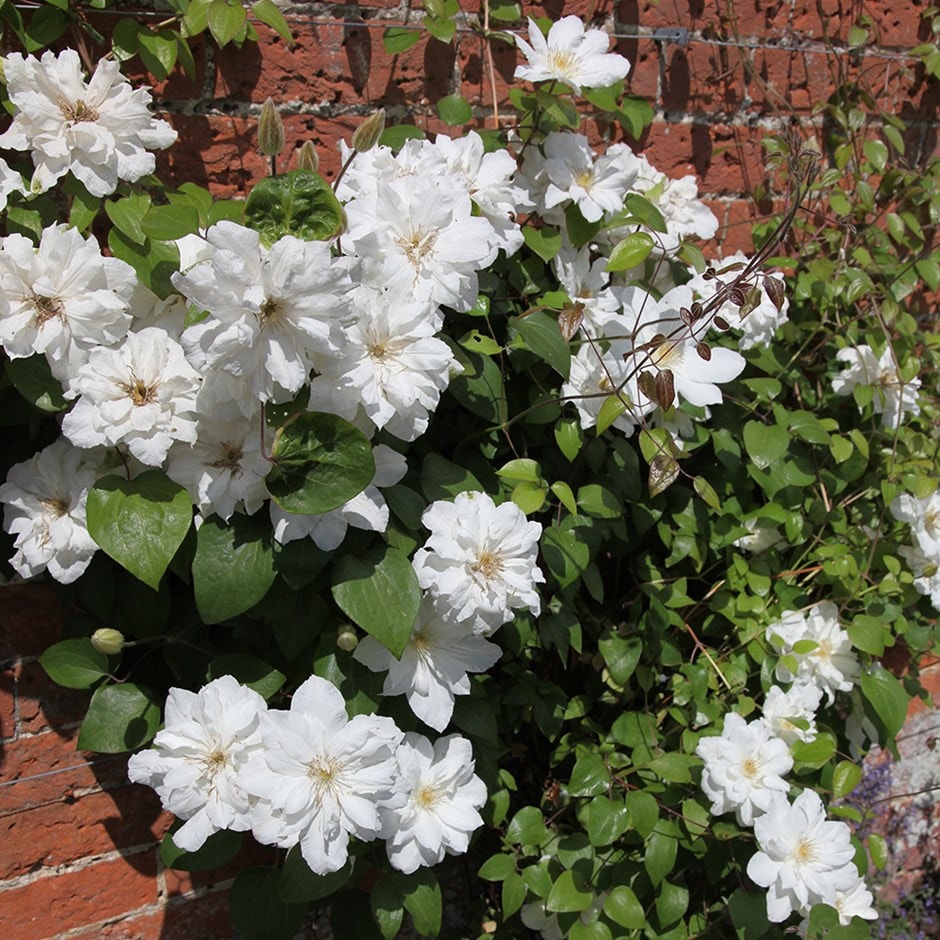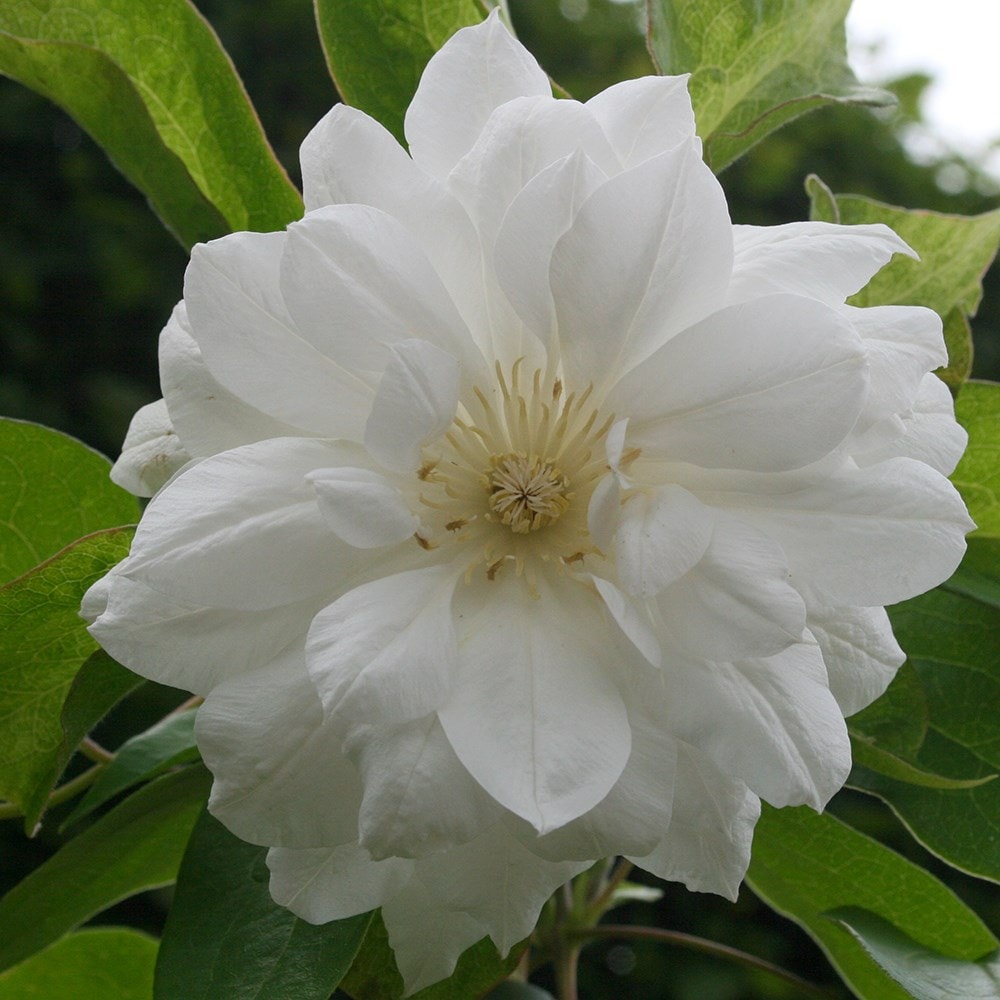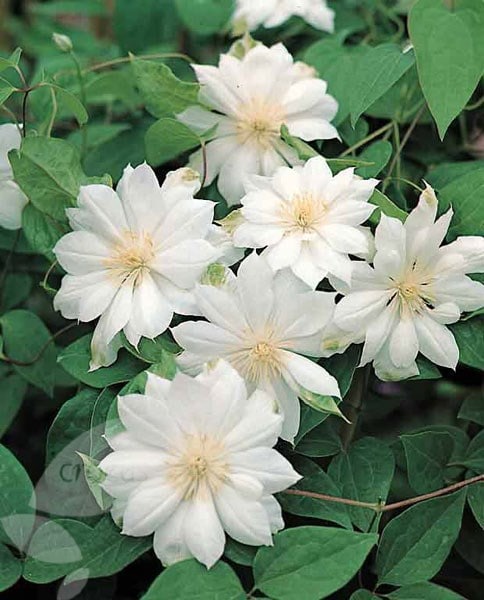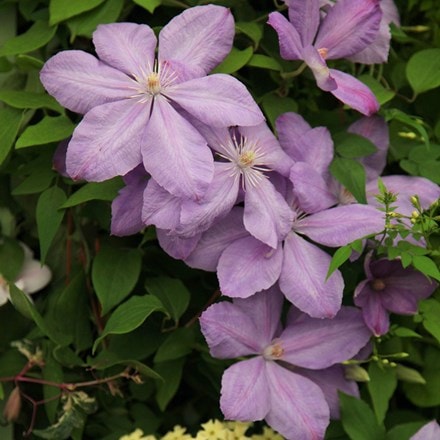Clematis 'Duchess of Edinburgh'
early large flowered clematis (group 2)
- 3 litre pot | 60cm cane
- £22.95
- In stock (shipped within 2-3 working days)
Delivery options
- Standard £5.99
- Position: full sun or partial shade
- Soil: moderately fertile, well-drained, neutral soil
- Rate of growth: average to fast
- Flowering period: May to June and occasionally September
- Hardiness: fully hardy
‘Duchess of Edinburgh' is a deciduous climber featuring mid-green ovate leaves and producing large, double, white flowers with occasional green tinges in early summer, popular with floral arrangers. These can measure up to 13cm (5in) across making this sublime and elegant clematis an excellent long season companion for climbing roses, shrubs, or trees.
To avoid dry conditions, and to ensure good soil contact around the rootball, we advise planting climbers at least 30cm (12in), and preferably 45-60cm (18-24in) away from the base of a wall or fence. An even larger distance should be maintained when planting climbers beside an existing tree or shrub.
Clematis are happiest when their roots are kept cool and moist, so try to plant them where the base of the plants will be lightly shaded by other, lower-growing species. Otherwise, use a clematis root protector, or top-dress the rootball (avoiding the immediate crown), with a generous layer of shingle or pebbles.
Remove dead and damaged stems before growth begins in early spring, cutting all remaining stems back to where strong buds are visible.
Apply a slow-release balanced fertiliser and a mulch of well-rotted garden compost around the base of the plant - again avoiding the immediate crown.
Clematis are happiest when their roots are kept cool and moist, so try to plant them where the base of the plants will be lightly shaded by other, lower-growing species. Otherwise, use a clematis root protector, or top-dress the rootball (avoiding the immediate crown), with a generous layer of shingle or pebbles.
Remove dead and damaged stems before growth begins in early spring, cutting all remaining stems back to where strong buds are visible.
Apply a slow-release balanced fertiliser and a mulch of well-rotted garden compost around the base of the plant - again avoiding the immediate crown.
- Humans: Skin allergen; Pets: Harmful if eaten





